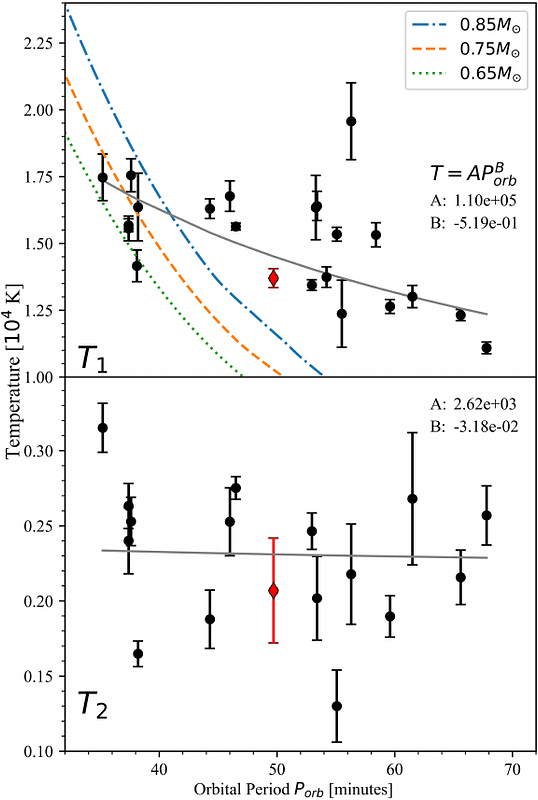The Temperature versus Orbital Period relation of AM CVns: Insights from their Donors

The Temperature versus Orbital Period relation of AM CVns: Insights from their Donors
Colin W. Macrie, Liliana Rivera Sandoval, Yuri Cavecchi, Tin Long Sunny Wong, Manuel Pichardo Marcano
AbstractWe studied the spectral energy distribution (SED) of 22 known AM~CVns with orbital periods ($P_{orb}$) larger than 35~min using multiwavelength public photometric data to estimate the effective temperature of the accreting white dwarf. We find an infrared (IR) excess in all systems when compared to a single blackbody, both when the disk should be extended and when it should be truncated by the accretor's magnetic field. This suggests a dominant contribution from the donor to the IR flux. When fitting two blackbodies, the temperature of the hot component decreases with $P_{orb}$, as expected by evolutionary models. Temperatures for systems with $35<P_{orb}<45~\text{min}$ are consistent with models. Systems with $P_{orb}\gtrsim45~\text{min}$ have higher temperatures than expected. The second blackbody temperature does not correlate with $P_{orb}$.